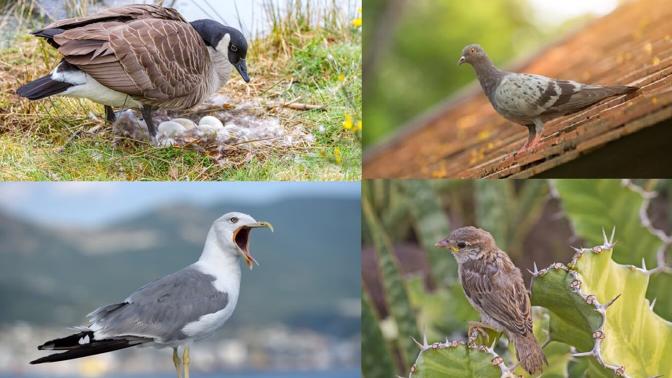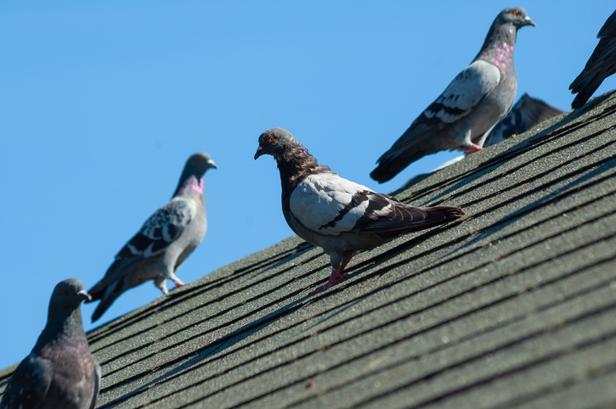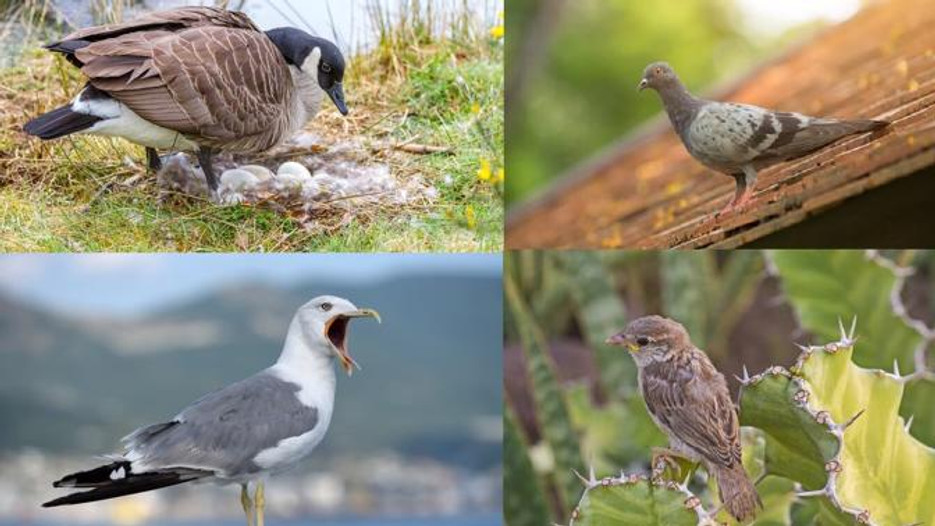Please add the schema tags below
Get Rid of Birds Fast: 3 Most Important Things to Know
The list of bird problems could go on and on and on, which is why so many people search the internet for “how to get rid of birds” every single day.
You might be at the beginning of your adventure, or you may have tried a few things already with little success. The good news is that bird control isn’t rocket science, there are proven methods that can drastically improve your success.
In this blog, we discuss the THREE most important things to identify when solving a bird control problem.
1. What Kind of Bird? When you see evidence of a nuisance bird problem, take some time to notice what types of birds are involved.
2. Where are the Birds? The location of the bird problem will help identify the bird activity, such as perching, loafing, or nesting. Leading to what solutions are most viable.
3. How Many Birds are There? The larger the population the more challenging the problem becomes. So take action as early as possible.
How to Get Rid of Birds
Letting these three questions go unanswered will lead to a lot of wasted time and effort. For every question there’s an answer, so let our bird control specialists tackle the problem with you. Take a look below for detailed explanations of each of these three questions!
Do any of these sound familiar?
- Pigeons roosting on your rooftop and nesting under solar panels.
- Woodpeckers pounding on your chimney cap or your siding
- Seagulls terrorizing your boat, dock, and marina.
- Crows scattering your garbage across your driveway.
- Black birds pillaging your fruit trees.
1. What Kind of Bird?
Identifying the bird species is the first and arguably the most important step to get rid of those pest birds plaguing your home. Identifying the bird species will allow you to figure out what you CAN and CANNOT do. Let’s explain.

Is the Species Protected? Yes or No
Most bird species benefit from a level of federal protection that limits bird control methods used. These protections are complicated, as federal laws usually are, but are designed to prevent protected birds from being put in harm’s way. Don’t touch, harm, or remove a bird or their nest unless you are 100% sure what species you are dealing with.
Pigeons, sparrows, and starlings are three of the most common source of bird problems and are generally the least protected birds.
NOTE: This seems like a good time to mention that you should focus on humane methods of bird control. If unsure of what methods to use, you can find a list of bird control options by bird species in the resource section below.
Size of the Bird
When it comes to bird control for different species, the physical size of the bird is usually the issue.
For example:
- Bird Spikes are designed for pigeon sized birds or larger, not for small birds.
- Bird Netting is highly effective when the appropriate mesh size is used.
- Scare tactics such as flashy visuals and audible bird distress calls are very popular but are mainly used to deter small birds that frighten easily.
Key Takeaway: When you see evidence of a nuisance bird problem, take some time to notice what types of birds are involved.
2. Where are the Birds?
Once you’ve identified the species, it’s time to find the location of the bird problem. Where on your house or property are the birds? Where are they perching, loafing, or nesting?

Bird Location = Motivation to Stick Around
How motivated are the birds to hang out in that spot? If food, water, and shelter from weather and predators are readily available, the birds will be highly motivated to stick around and remain in the area.
Open Exposed Ledges = Perching or Roosting Birds
Open, exposed ledges, sills, rooftops are great places for birds to scout for food and predators during the day. But these open areas are generally not safe enough for them to build their nests.
Covered, Shaded & Protected = Nesting
Covered and shaded areas provide ample protection against predators and harsh weather conditions, which explains why birds gravitate towards these areas when nesting. Nesting birds are highly motivated to stay and may even fight to keep their spot.
Here are some common locations around your house where birds are highly active:
- Pigeons like areas that mimic cliffs. Think windowsills, tops of signs, rooftop ledges, and other similar spots.
- Sparrows love small pocketed protected areas to nest. Your porch, light fixtures, and patios are all prone to sparrows and small birds.
- Geese like areas near bodies of water such as lakes or ponds that have open grass fields to feed on.
- Woodpeckers love the eaves or wood siding of your house where they can latch on and peck away. They also love reverberation, so they really are picking the loudest place to peck.
- Seagulls love high/tall areas that are relatively flat such as rooftops, marinas, or parapet ledges. If you live on or near the beach and have the tallest house in your neighborhood, gulls probably have chosen your home as a roost.
Tip: A careful look around your property will reveal places where birds are likely to show up so you can prevent a bird problem before it happens or at least early in the development stages.
The Importance of Cleaning Up - DON'T SKIP
Regardless of the species or the location, every bird control solution needs to begin with a thorough cleanup of bird droppings. It’s impossible to solve a pest bird problem as long as the evidence still remains. If the problem has been severe, prolonged, and caused by large numbers of birds, you’ll need professional help to clean up the mess. Bird droppings contain a variety of diseases, so they need to be handled with extreme caution.
Cleaning does the following:
- Removes droppings and nesting materials. Birds see these messes as an invitation to settle down and move in. Cleaning and disinfecting the area removes scents and pheromones that can attract them back to the area.
- Lowers their motivation. Cleaning up also involves removing food and water sources from the area as much as possible. Once access to food and water is diminished and the area is clean, motivation becomes less of an issue and increases the likelihood of success for bird control strategies.
Key Takeaway: The location of the bird problem will help identify the bird activity, such as perching, loafing, or nesting. Leading to what solutions are most viable.
3. How Many Birds are There?
Professionals use the terms ‘Infestation Level’ and ‘Bird Pressure’ to identify the combination of flock size and the severity of the infestation. The larger the population generally means the severity of the problem increases.

Going from Low, medium, and finally to a heavy bird pressure:
Low Bird Pressure: This might look like an occasional bird perching on the fence, windowsill, or balcony railing. Deterrence is usually simple and straightforward.
Medium Pressure: This might look like a handful of pigeons perching on a roof top with some regularity. These issues are also fairly simply to address, but cleanup and a combination of products or techniques are generally required.
Heavy Bird Pressure: When a large pigeon flock perches and nests under solar panels, that’s a high-pressure situation that will require significant cleanup and more than one solution.
Certain bird control methods work great for low pressure problems, while more aggressive solutions are designed for medium to heavy bird problems. Understanding the difference is key to properly remediating issue.
Key Takeaway: The larger the population the more challenging the problem becomes. So take action as early as possible.
Resources: Check Out these Useful Pages
Resource: Shop by Bird Species
Resource: Shop by Problem Area
Resource: Ask an Expert for Help
Blog: Nesting Birds on Your Home? How to Get Rid of Them
Ask Our Bird Experts for Help
If you’re ready to get rid of birds on your property, answer these three questions: what kinds of birds do you have, where are they, and how many of them are there? Then call Bird B Gone. We’ve got products and solutions for every type of bird problem. Flock of seagulls on your marina roof? No problem. Hundreds of pigeons on your rooftop? We can help with that. Sparrows nesting in the rafters of your outdoor deck? We can get rid of them. Crows eating your garden? We’ve got that problem covered, too.
If you’re being bothered by one bird or one hundred birds, Bird B Gone is here to help those birds be gone. Don’t wait, call us today to talk about which solutions are right for you.

